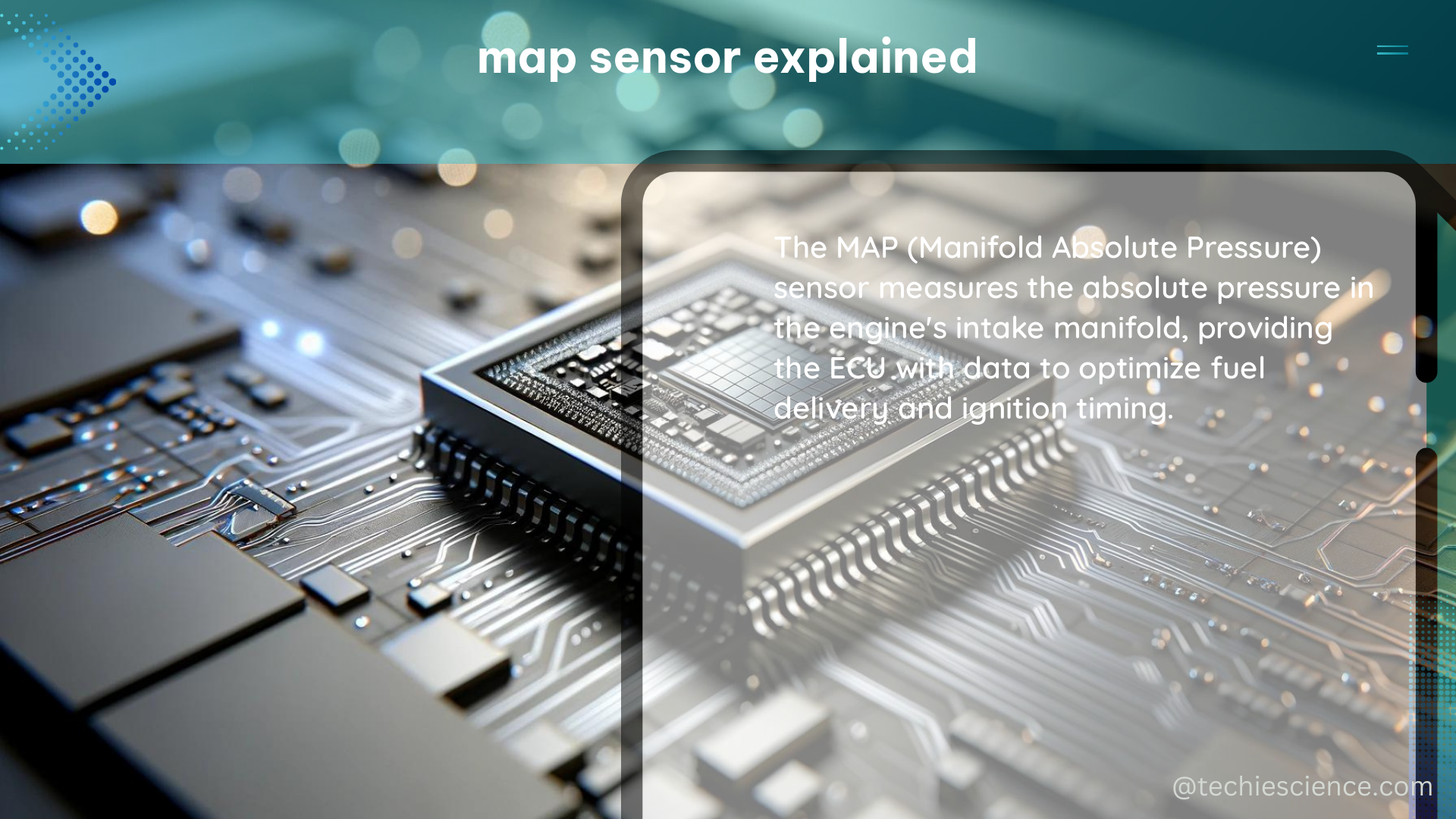The Manifold Absolute Pressure (MAP) sensor is a critical component in modern electronic fuel injection (EFI) systems, responsible for providing the Engine Control Unit (ECU) with vital information about the air pressure within the engine’s intake manifold. This comprehensive guide will delve into the intricacies of MAP sensors, their working principles, and the importance of proper sensor selection and sizing for optimal engine performance.
Understanding the Role of MAP Sensors
A MAP sensor measures the absolute air pressure in the intake manifold of an engine, which is a crucial parameter for determining the amount of air entering the combustion chambers. This information is essential for the ECU to calculate the appropriate fuel delivery, ignition timing, and other engine management parameters, ensuring efficient and reliable engine operation.
MAP sensors come in various types and sizes, with the most common being the GM-style sensors, which have been widely used by original equipment manufacturers (OEMs) for decades. These sensors measure pressure in multiples of ‘bar’, with 1 bar being equivalent to 14.5038 psi or 29.53 inHg.
Translating Pressure into Electrical Signals

MAP sensors translate the intake manifold air pressure into a variable voltage signal that the ECU can interpret. The signal voltage changes proportionally to the air pressure, allowing the ECU to precisely determine the amount of air entering the engine.
The ECU can work with a wide range of MAP sensor sizes, even if the sensor is oversized for the application. However, if the MAP sensor is operating at the edge of its capacity and the system requires more boost pressure, the sensor will need to be replaced with a higher-range model.
Analyzing the MAP Sensor Signal
The MAP sensor signal varies with the engine’s RPM and load conditions. At idle, the signal level is typically around 1 volt, corresponding to a pressure of approximately 350 mBar in the manifold. As the engine speed and load increase, the pressure rises, resulting in a wider signal band.
The individual strokes of the engine can be discerned from the MAP sensor signal, which can be useful in diagnosing engine-related issues. Analyzing the signal can provide valuable insights into the engine’s performance and help identify potential problems.
Troubleshooting MAP Sensor Issues
Incorrect signal values from a MAP sensor can indicate various problems, including issues with the sensor itself or the engine control unit. A lack of signal may suggest a disconnected back probe, no power supply, or a defective sensor. A high signal voltage may indicate a poor or missing ground on the power supply, a vacuum circuit leak, or a faulty sensor.
Noise in the MAP sensor signal can be caused by damaged wiring, poor connections in the connector terminals, or issues with the power supply. An offset in the signal may indicate a poor power supply to the MAP sensor or a defective sensor.
Selecting the Appropriate MAP Sensor
To ensure accurate measurements and optimal engine performance, it is crucial to select the correct MAP sensor for the application. Even in naturally aspirated engines, the intake manifold can experience pressure fluctuations of around 14.7 psi (or 0-30 inHg). Therefore, the MAP sensor must be capable of accurately measuring this pressure range.
When choosing a MAP sensor, it is essential to consider the maximum expected boost pressure and the engine’s RPM range. For high-performance engines, a sensor with a higher pressure range and a wider measuring range is recommended to accommodate the increased demands.
Technical Specifications and Sensor Sizing
MAP sensors are available in a variety of pressure ranges, from 0-15 psi (0-1 bar) for naturally aspirated engines to 0-50 psi (0-3.5 bar) or higher for forced induction applications. The sensor’s voltage output typically ranges from 0.5 to 4.5 volts, with a linear relationship between pressure and voltage.
The sensor’s accuracy is also an important consideration, with typical accuracies ranging from ±0.5% to ±1.5% of the full-scale output. The sensor’s response time, which can vary from a few milliseconds to several hundred milliseconds, should also be taken into account, depending on the engine’s operating characteristics.
Conclusion
The MAP sensor is a critical component in modern EFI systems, providing the ECU with essential information about the air pressure within the engine’s intake manifold. By understanding the technical specifications, working principles, and troubleshooting techniques related to MAP sensors, enthusiasts and professionals can ensure their engines operate at peak performance and efficiency.
Reference:
– Understanding MAP Sensor Sizing With Ben Strader Of EFI University
– Measuring a MAP sensor – TiePie Automotive
– MAP Sensor – Manifold Absolute Pressure – Explained – YouTube

The lambdageeks.com Core SME Team is a group of experienced subject matter experts from diverse scientific and technical fields including Physics, Chemistry, Technology,Electronics & Electrical Engineering, Automotive, Mechanical Engineering. Our team collaborates to create high-quality, well-researched articles on a wide range of science and technology topics for the lambdageeks.com website.
All Our Senior SME are having more than 7 Years of experience in the respective fields . They are either Working Industry Professionals or assocaited With different Universities. Refer Our Authors Page to get to know About our Core SMEs.